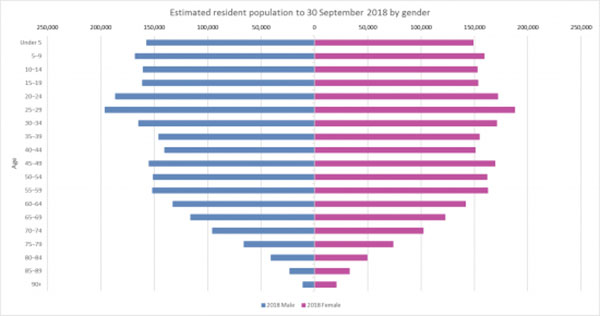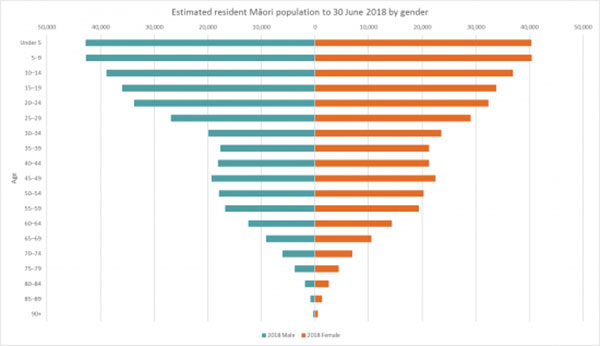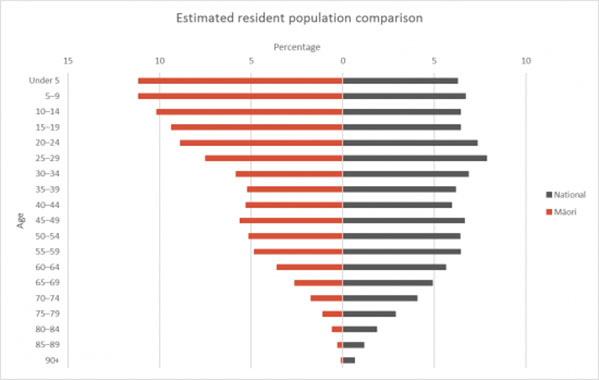StatsNZ has released its estimates to 30 September 2018 for the national resident population and to 30 June 2018 for the Māori resident population, ahead of 2018 Census data being released in early 2019. Population change in New Zealand is calculated based on natural increase (births minus deaths) and net migration (international migrant arrivals minus departures).
The estimated resident population of New Zealand reached 4,907,200 end of September 2018, and the estimated Māori population is 744,800, up 1.4% from 30 June 2017. The Māori resident population is growing at a slower rate than the national population, which grew 1.9% over the same time period

The estimated populations by gender are fairly similar with males slightly outnumbering females up to age 24 years. From 25 years, there are more females across all age groupings particularly over 80 years of age. In the national population estimates, there have been small decreases from the same time in 2017 in the 15-19, 40-44 and 50-54 age groupings, and small increases in the 25-29, 30-34 and 70-74 age groupings. These estimates line up with the crude birth rate, which aside from increases in the post-WW2 period and late 80’s-early 90’s, has generally been declining in the last 60 years.

There are considerable differences when you look at the estimated national and Māori populations by age, with the median national age is 36.9yrs (35.6yrs male, 38.2yrs female) and the median Māori age is 24.6yrs (23.1yrs male, 26.1yrs female). The Māori population is considerably younger with nearly 60% under 30yrs compared to 41% under 30yrs in the national population.
Population projections released by StatsNZ following the 2013 Census stated that Māori population growth will be driven by their high rate of birth and natural increase (births minus deaths). During 2012–14, the total fertility rate was 2.5 births per woman, compared with the overall New Zealand total fertility rate of 2.0 births per woman.

To see population growth in your region, visit the interactive StatsNZ map here.